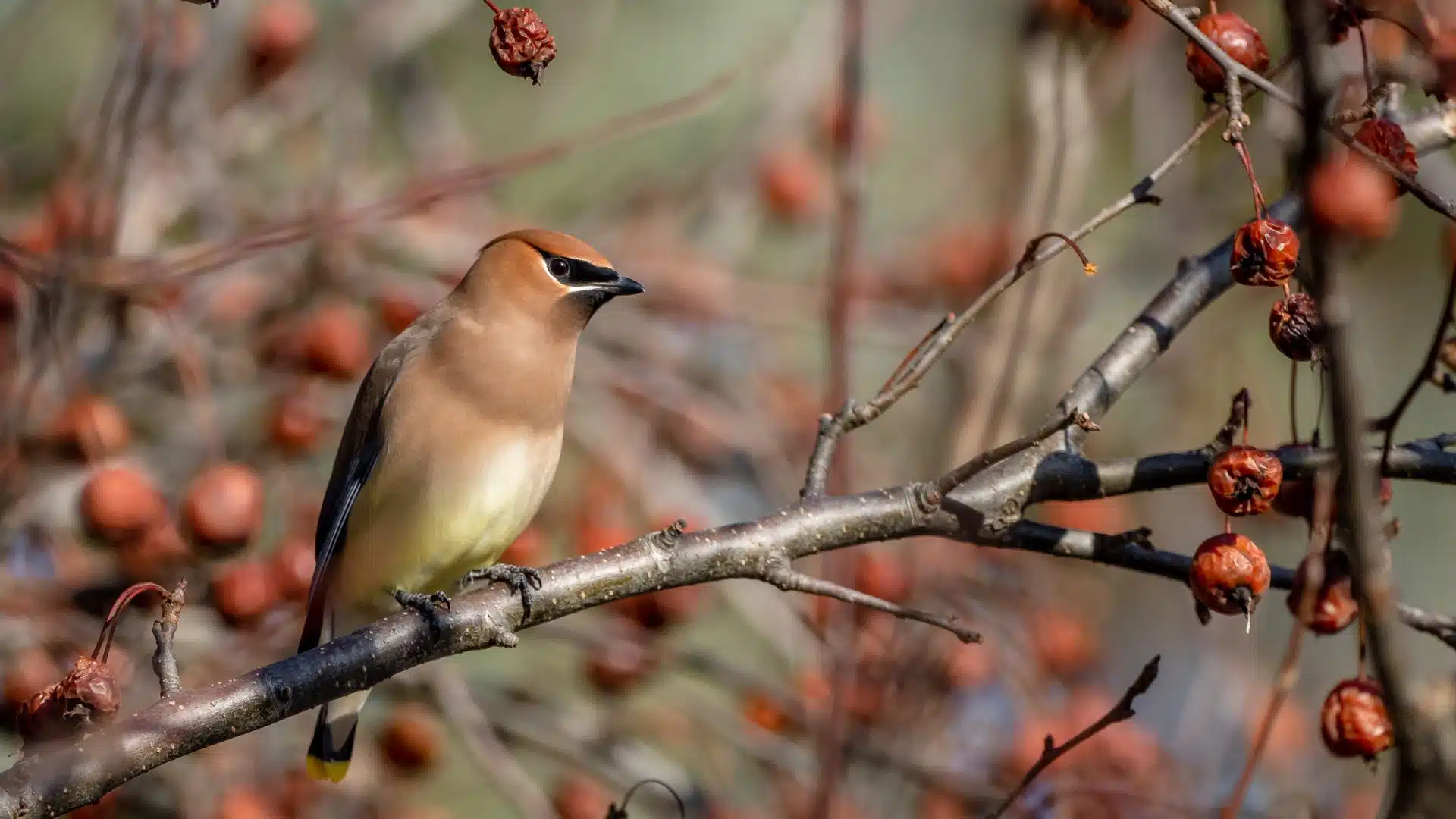Birds
Cedar Waxwing
Bombycilla cedrorum

Cedar waxwings are found throughout much of North America in open habitats with abundant berry trees. They can inhabit open spaces in deciduous, coniferous and mixed woodlands. They are nomadic social birds, traveling in flocks during the fall and winter. They are common in towns and suburbs with ornamental berry trees.
Cedar waxwings diet mainly consists of 80 percent fruit. They are specialized in eating fruit; seeds from the fruit can pass through their intestines, unlike most bird who regurgitate fruit seeds. In summer they eat fruits from serviceberry, strawberry, mulberry, dogwood and raspberries. In winter their diet includes the fruits from cedar, mistletoe, juniper, mountain ash, honeysuckle, crabapple and hawthorn. In late winter and early spring cedar waxwing occasionally become intoxicated or even die when thawing of overwintered berries allows for the transform sugars present in the juice of the berry into ethanol. In addition to fruit, in the summer cedar waxwings supplement their diet with protein rich insects including mayflies, dragonflies, stoneflies and leaf beetles.
Most breeding pairs of cedar waxwings begin breeding in June. During courtship males and females hop back and forth to each other passing fruit, insect or flower petals from one to the other. They repeat this several times until the female finally eats the item.
Cedar waxwings look for nest sites together in partial to wet habitats, especially in areas with large trees bordering streams, ponds and lakes. Females make the final nest site decision. Typically nest are placed in forks of a horizontal branch from 3 to 50 feet high on pine, maple, eastern red cedar, arborvitae, apple, pears, burr oak or hawthorn. Females construct the cup nest in five to six days. Nests are constructed with grasses, twigs and cattail downs. Nest are lined with fine roots, pine needles and grasses.
Cedar waxwings typically lay three to five pale blue gray speckled eggs. Females incubate the eggs 12 to 14 days and the young are tended to by both parents, who open their eyes after seven to eight days. Young cedar waxwings leave the nest 16 to 18 days after hatching.
Cedar Waxwing populations are stable according to the North American Breeding Bird Survey. However, like most birds, they are susceptible to window collisions and can be struck by cars near roadsides with fruiting trees. Partners in Flight estimates a breeding population of 52 million.
Color: Cinnamon-brown crested head, black mask outlined in white. Wings tips red waxy but hard to see. Stomach is pale yellow. Gray tail with a bright yellow tip .
Range: North America
Size: 5-7"
Wingspan: 8-12"




